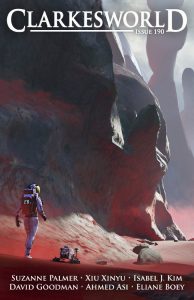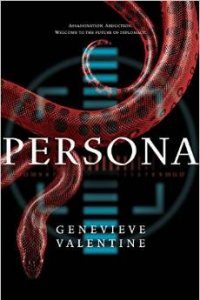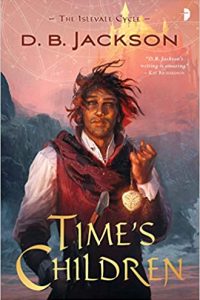Karen Burnham Reviews Short Fiction: Clarkesworld and Kalicalypse: Subcontinental Science Fiction
 Clarkesworld 7/22
Clarkesworld 7/22
Kalicalypse: Subcontinental Science Fiction, Tarun K. Saint, Bodhisattva Chattopadhyay & Francesco Verso, eds. (Future Fiction) June 2022.
The stories in July’s Clarkesworld fall all over the genre map, from war stories to meta cyberpunk. My favorite is ‘‘The Sadness Box’’ by Suzanne Palmer. Fundamentally a boy-and-his-(AI)-dog story, this boy is living in suburbia in the midst of a slow-moving, war-torn apocalypse, shuttling between the houses of his fairly normal mom and stepdad and that of his arrogant inventor father. His dad makes a new iteration of Claude Shannon’s ‘‘useless machine,’’ designed only to turn itself off whenever it is turned on, but with a twist that he gave it an AI that turns itself off due to existential terror of the universe. The boy steals the box, which may not have stayed within the confines of its original programming. When the boy gets infected by warbots while escaping from a roving gang his dad is able to save him, but when the dad becomes infected it will be a race to see if he can be saved. Each of the characters, including the AI, is saved from being one dimensional by Palmer’s writing. ‘‘Carapace’’ by David Goodman is set in a far distant war-torn world. SM-16 is an exoskeleton that gains consciousness after its pilot is killed in an ambush attack. We get its perspective as it changes its mission objectives, picks up a POW, and has to attempt to re-infiltrate its own base because its IFF (identification, friend or foe) unit was damaged. Its relationship with the POW evolves through their adventures. I would like to read more about this mechanized character, who reminds me of Martha Wells’ Murderbot in some ways. ‘‘Termination Stories for the Cyberpunk Dystopian Protagonist’’ by Isabel J. Kim is a nice bit of meta commentary on certain genre tropes. Cool and Sexy Asian Girl is helping White Boy/Tourist in his cyberpunk detective story. She’s really enjoying that role and is misdirecting him to draw things out so she can keep playing it. The story is molding around her, since she’s more aware of the narrative structure than any of the other characters. As with any good thing though, it can’t last forever.
Kalicalypse: Subcontinental Science Fiction is a fascinating anthology of Indian science fiction with stories in both English and Italian translations. Edited by Tarun K. Saint, Bodhisattva Chattopadhyay & Francesco Verso, the concept of the anthology is the multiplicity of apocalypses that have occurred/are occurring/will occur. Kali, being a goddess of both destruction and renewal, is also a goddess of time itself. In the introduction Chattopadhyay points out ‘‘there is no singular contemporary to which there is a singular future… the destruction of one world isn’t the destruction of all worlds….The illusion of singularity is the illusion broken by the Kalicalypse.’’ As such there is a multiplicity of visions presented in the stories here, and also a keen awareness of the social structures that will continue to shape all these futures, regardless of technological innovations, unless they are consciously addressed. Because of this wide diversity of views and viewpoints, there is a broad mix of emotional registers in the volume, from bleak to downright hopeful.
One story that embodies the twinning of hope and despair is ‘‘Kali_Na’’ by Indrapramit Das, the sole reprint here. Durga is a lower caste woman in the near future. Scavenging and coding, she is present in VR when the new AI Devi 1.0 is launched – and immediately beset on all sides by trolls. This new generic goddess quickly evolves into a Kali figure and unleashes chaos and destruction on the trolls until shut down by the owners, Shiva industries. But Durga is still around in the aftermath, and there are things left over that might be particularly empowering. Another story that has an air of hope to it is ‘‘Anamnesis’’ by Rupsa Dey. NQ is an early model android. Now the big DISEC system is trying to integrate him, which would mean losing most individuality. There are still independent collectives out there keeping themselves safe.
It can’t all be happy endings in an apocalyptic anthology, however. One of the most wryly gut punching is ‘‘The Art of Possible’’ by Yudhanjaya Wijeratne. Yasasmin Karunaratne was born to write Policy, raised by an activist mother. After early success in education Policy, she marries a man who is brilliant in Theory, and they set to work on a Grand Unified Policy. After an outbreak of nuclear war, she is able to help with organizing recovery a little bit, while he’s only good for manual labor. Is there any use for sophisticated Policies when the world devolves? In another story that takes a different angle on the social media dynamics at play in Das’s story above, ‘‘Steeling Minds’’ by Kehkashan Khalid imagines a social media influencer, Shehrezad. She’s found dead, and as part of the autopsy the narrator accesses the memories found in her embedded Shard/computer interface. It details her rise in influence, gaining success and virality, and of course attracting trolls. This neatly encapsulates some of the best and worst of how the internet operates these days. Finally ‘‘The Almighty’’ by Md Zafar Iqbal (translated by Arunava Sinha) imagines an astronaut alone on a spaceship staffed by robots. When faced with nigh-certain catastrophe, he mutters a prayer – and catastrophe is averted. The robots observe this and decide that god is real – and immediately fall into a spiral of religious schisms, much to the astronaut’s dismay. In a society this small, it’s almost certain not to end well.
Recommended Stories:
“The Sadness Box”, Suzanne Palmer (Clarkesworld 7/22)
This review and more like it in the Sepetmber 2022 issue of Locus.
 While you are here, please take a moment to support Locus with a one-time or recurring donation. We rely on reader donations to keep the magazine and site going, and would like to keep the site paywall free, but WE NEED YOUR FINANCIAL SUPPORT to continue quality coverage of the science fiction and fantasy field.
While you are here, please take a moment to support Locus with a one-time or recurring donation. We rely on reader donations to keep the magazine and site going, and would like to keep the site paywall free, but WE NEED YOUR FINANCIAL SUPPORT to continue quality coverage of the science fiction and fantasy field.
©Locus Magazine. Copyrighted material may not be republished without permission of LSFF.






